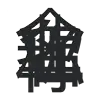Coffee Resources
- James Hoffman youtube - lots of good coffee stuff
- v60 - pour over
- Fellow Stagg - overpriced design kettle
- An app to measure grind consistency
- Making Cappuccino/Latte/Flat White at Home (without an Espresso Machine)
- awesome-cn-cafe - list of coffeeshops in China
- My List of Coffeeshops in Shanghai
- Reddit coffee wiki
Coffee Knowledege
- There are two types of coffee - robusta and arabica
- Robusta is used for espresso and instant coffee, it’s bitter and strong
- Arabica is the smooth goodness we know and love
Coffee(and particularly arabica) is a very picky plant - it grows in a very specific climate. It should be between 18 and 21 degrees celsius. It needs a specific amount of rain, and is best if it has a 3 month dry season so that it can flower. Crucially, it needs hot days and cold nights - that’s why it’s most commonly grown at a specific elevation, 1000-2000 meters above sea level.
Washed vs. Natural
This link. Basically, natural is dried while in the fruit, not removing the seed (coffee bean) from the surrounding fruit before drying. Washed process uses a machine or tank to wash the beans before drying, then the beans are dried without the surrounding fruit.
Basically:
- natural = fruity-er, wilder, but more imperfections and defects
- washed = clarity, the intrinsic flavors of the bean
COLD BREW
- Make with filter roast coffee.
- Coarse-Medium grind.
- Brew for 8-24 hours.
- It’s best if it’s very strong “concentrate”, and you add some water when you serve it.
Buying Coffee
A few things to note about buying coffee beans:
- Always, obviously, buy whole bean.
- It’s absolutely imperative that the roast date is on the coffee (not best by date).
- Traceability is an indicator of good quality. If the merchant can tell you which farm it’s from, or which region, or which country — that’s a good indicator of the coffee’s purity.
- 1-6 weeks after roasting is the sweet spot for beans
Pour Over
- Hario v60 brewer is generally the gold standard
- 60 grams of coffee beans per kilo of water. e.g., 500g water = 30g coffee.
- For light roast beans, the hotter the water the better, 100deg celsisus is good.
 Last modified:
Last modified:  Last modified:
Last modified: